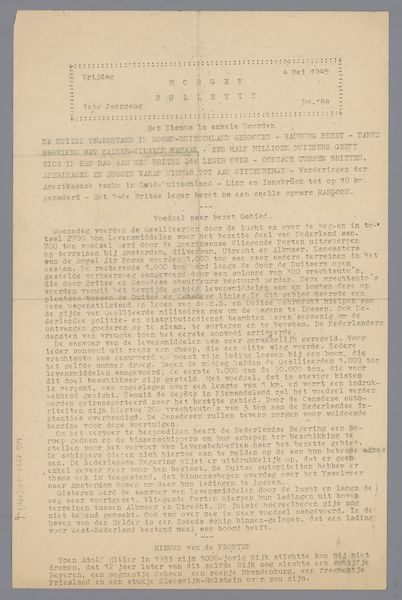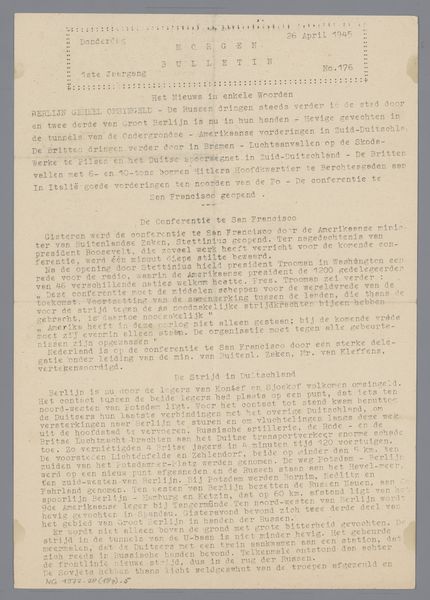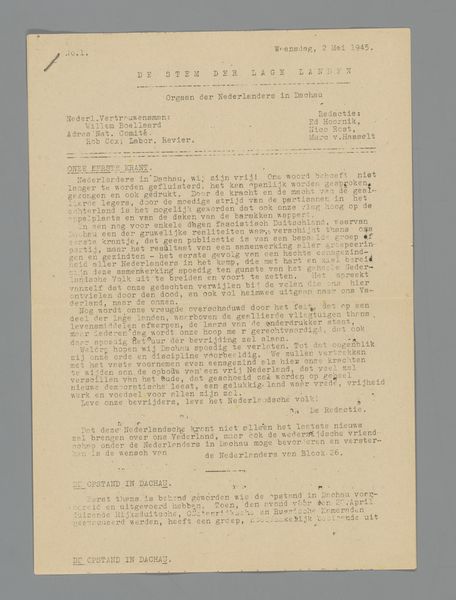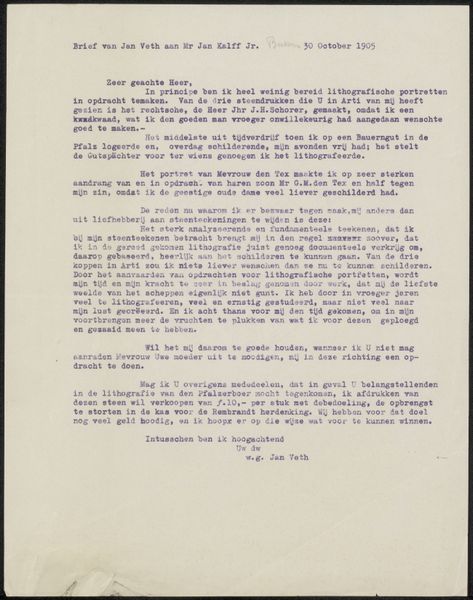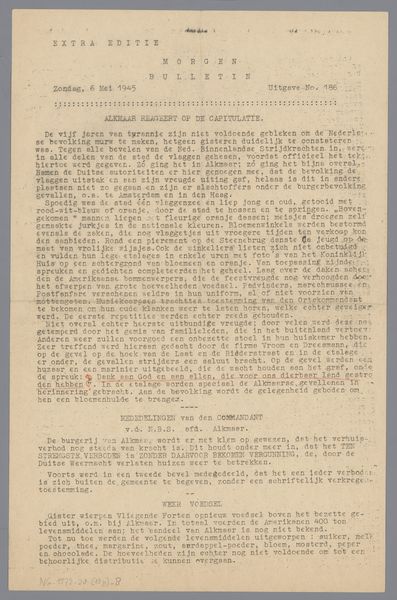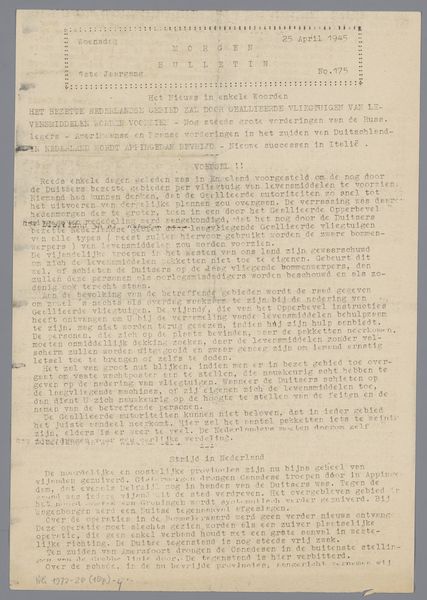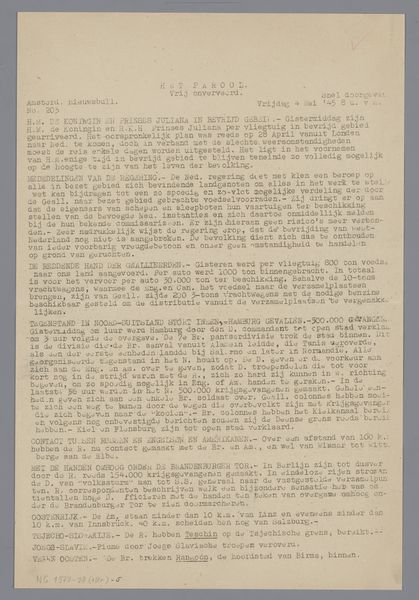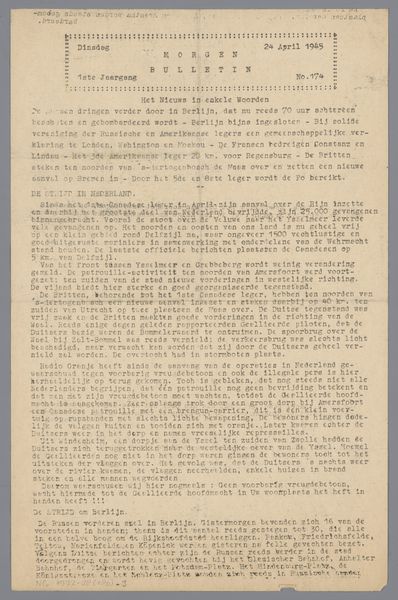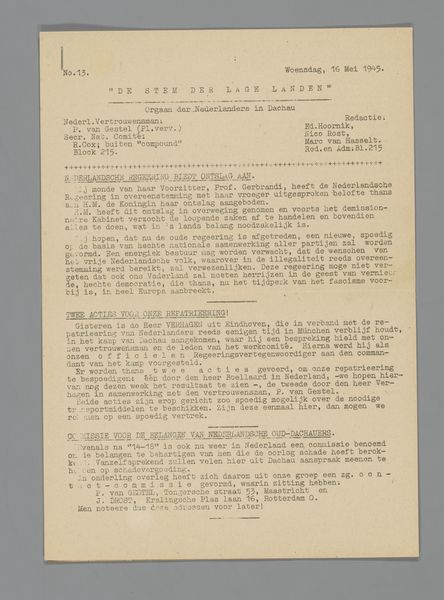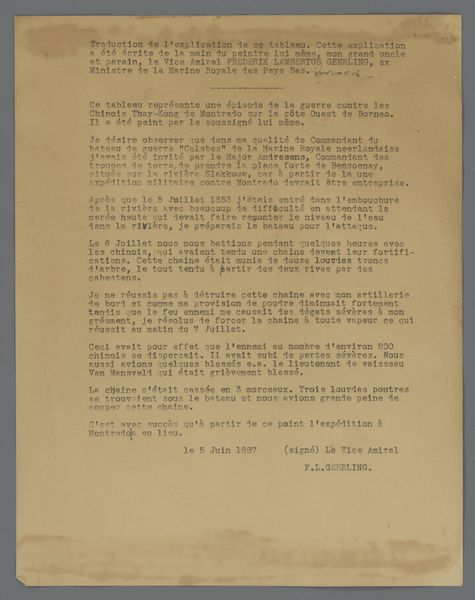
De Vrije Kunstenaar; religieus en politiek onafhankelijk orgaan voor de Nederlandsche Kunstenaars 1942 - 1946
0:00
0:00
print, textile, paper, typography, poster
# print
#
textile
#
paper
#
typography
#
poster
Dimensions: height 27.5 cm, width 21.4 cm
Copyright: Rijks Museum: Open Domain
Curator: This poster, titled "De Vrije Kunstenaar," from 1942 to 1946, is a stark example of resistance through art during wartime. Its textual format grabs your attention instantly. What strikes you about this piece? Editor: It's fascinating to see such direct political messaging during that time. The text-heavy composition and typography make it feel urgent and like a call to action. What’s the context surrounding its creation, and how did it function within the Dutch art scene during the Nazi occupation? Curator: "De Vrije Kunstenaar" – "The Free Artist" – was a clandestine publication that acted as a voice of defiance against the Nazi occupation and the imposed "Kultuurkamer," which sought to control and Nazify Dutch cultural life. It embodies resistance through independent thought and artistic freedom. Note the overt criticism of collaborationist figures and the appeal to humanist values. It's not just an artwork; it's a political act. Editor: It's powerful to consider this as an act of rebellion, given the constraints and dangers of the time. Was this widely circulated, and what kind of impact did it have? Curator: Circulation would have been limited due to the occupation, but its impact was significant among artists and intellectuals. It served to rally resistance, preserve cultural identity, and mock the oppressor. Publications like this sustained hope and demonstrated that even under occupation, artistic freedom and critical thought could not be entirely suppressed. Editor: I see now how the “politics of imagery” you mentioned really comes into play, considering this piece aimed to subvert Nazi control through text and typography. Curator: Precisely! By analyzing this poster through its historical and cultural context, we can see how it became an instrument of resistance, a testament to the enduring power of art against oppression. Its public role was critical, though necessarily underground. Editor: Thinking about art as a form of rebellion is incredibly powerful. Thanks, I really appreciate the depth of that historical perspective. Curator: And thank you, for highlighting the continued resonance of art as a site of resistance.
Comments
No comments
Be the first to comment and join the conversation on the ultimate creative platform.


